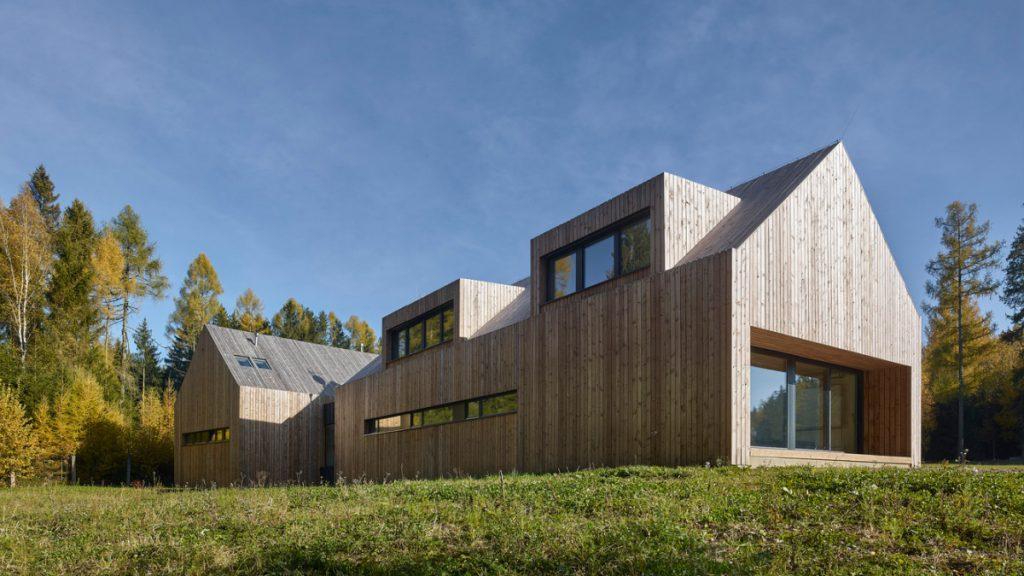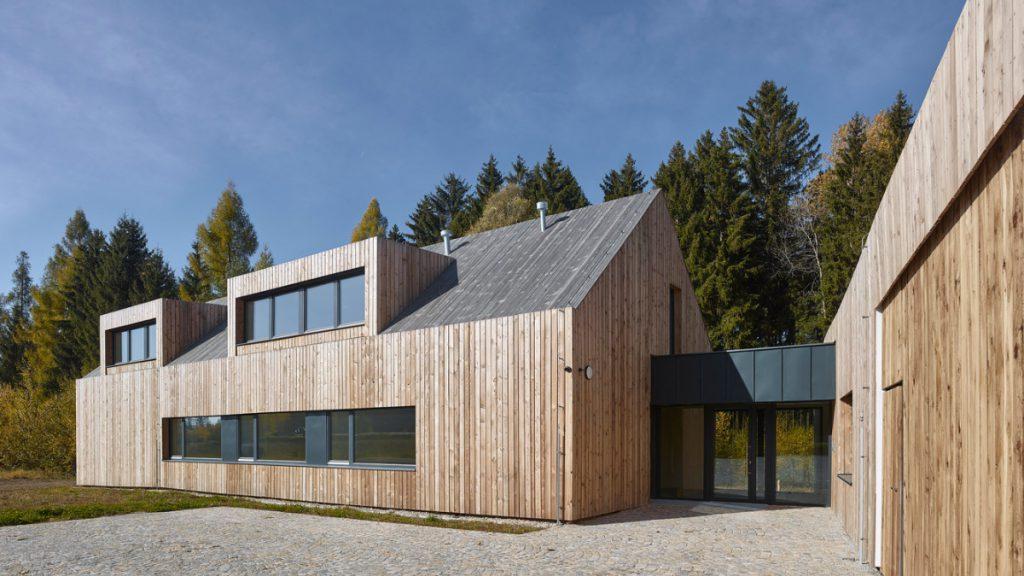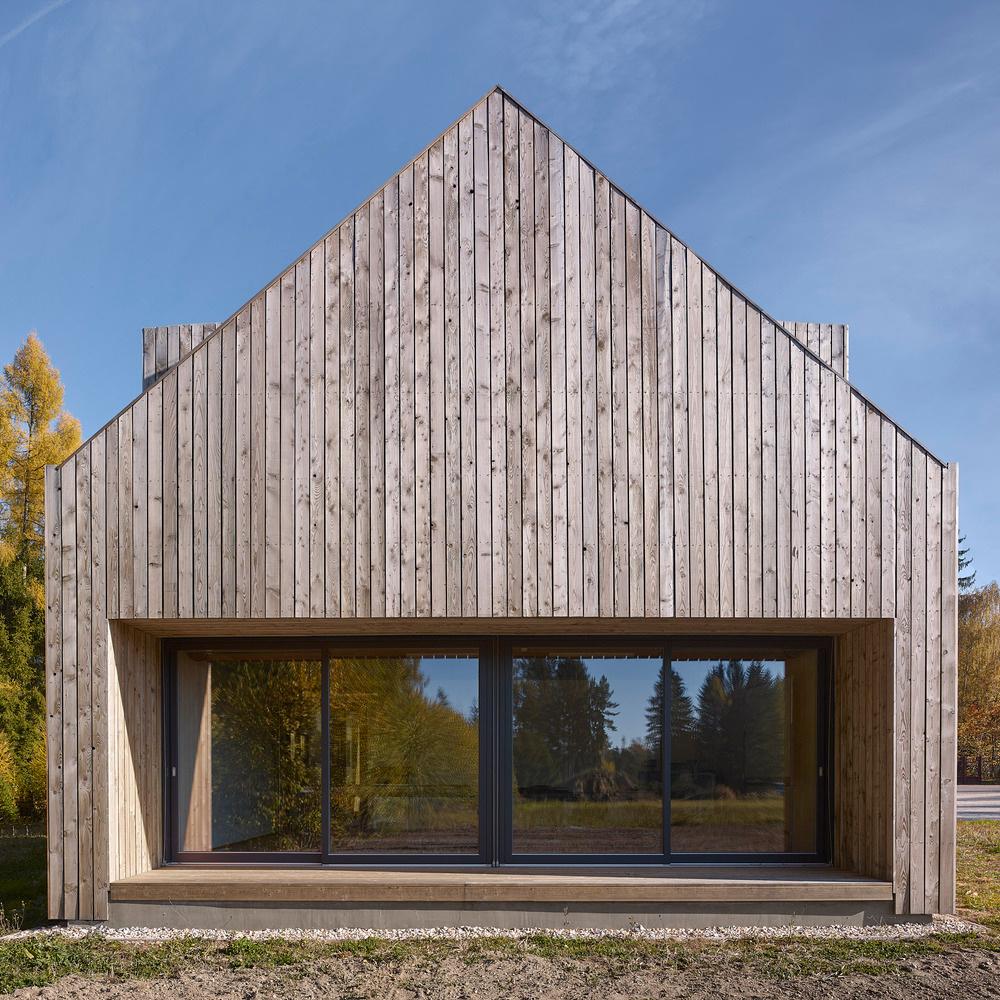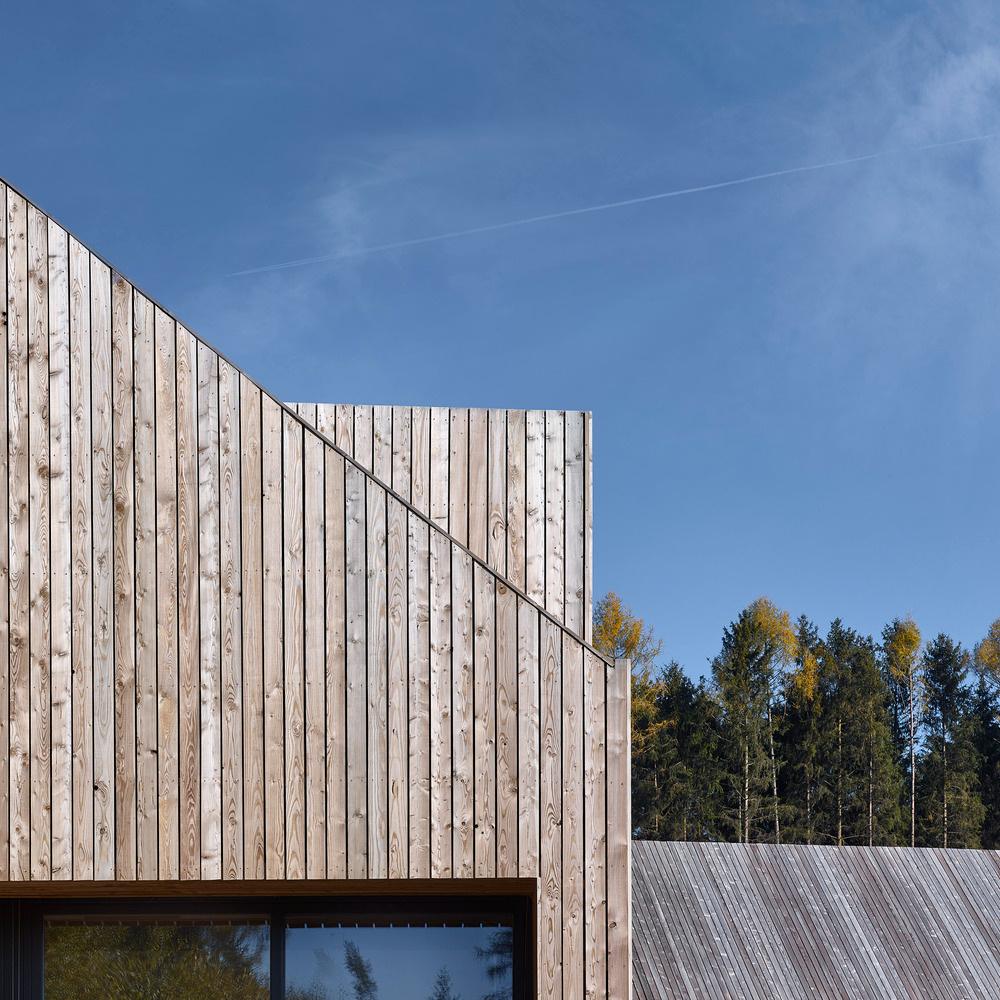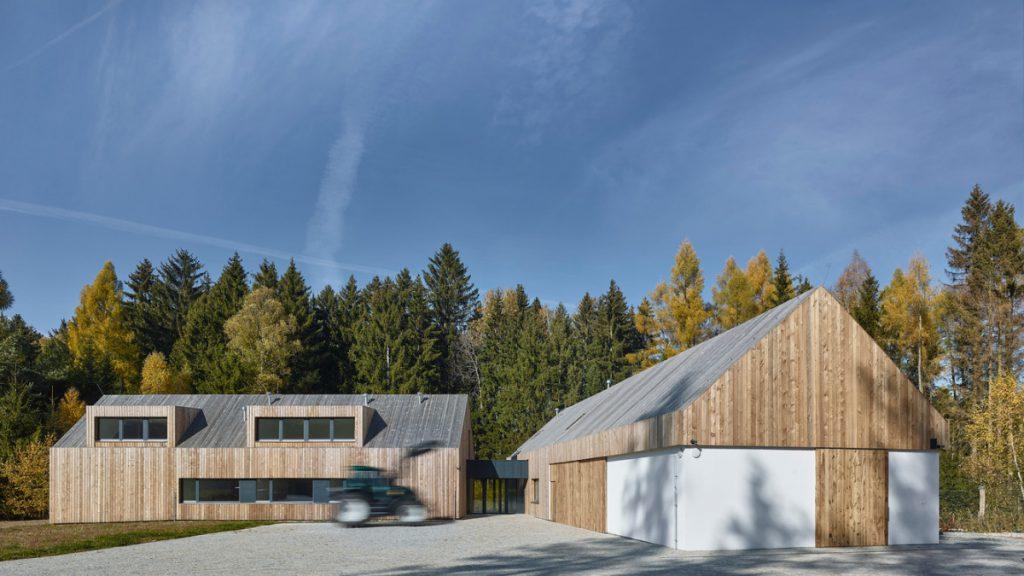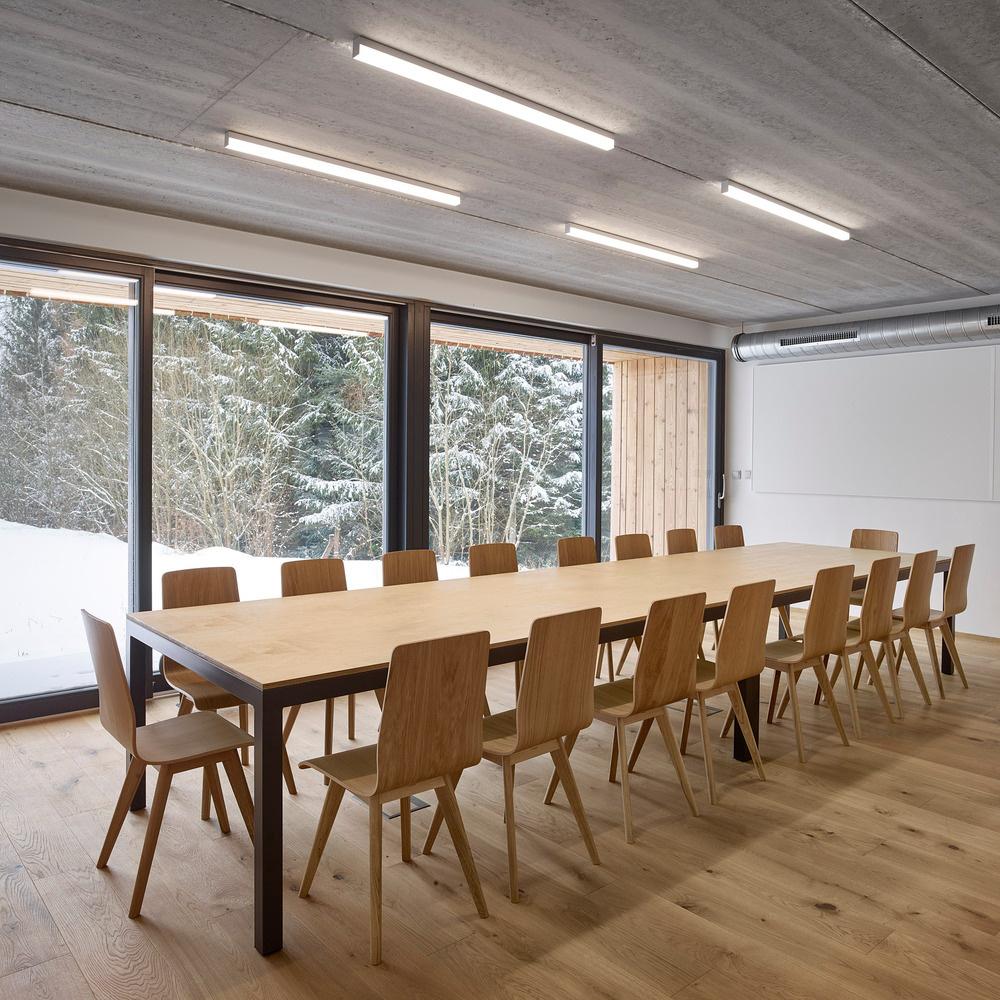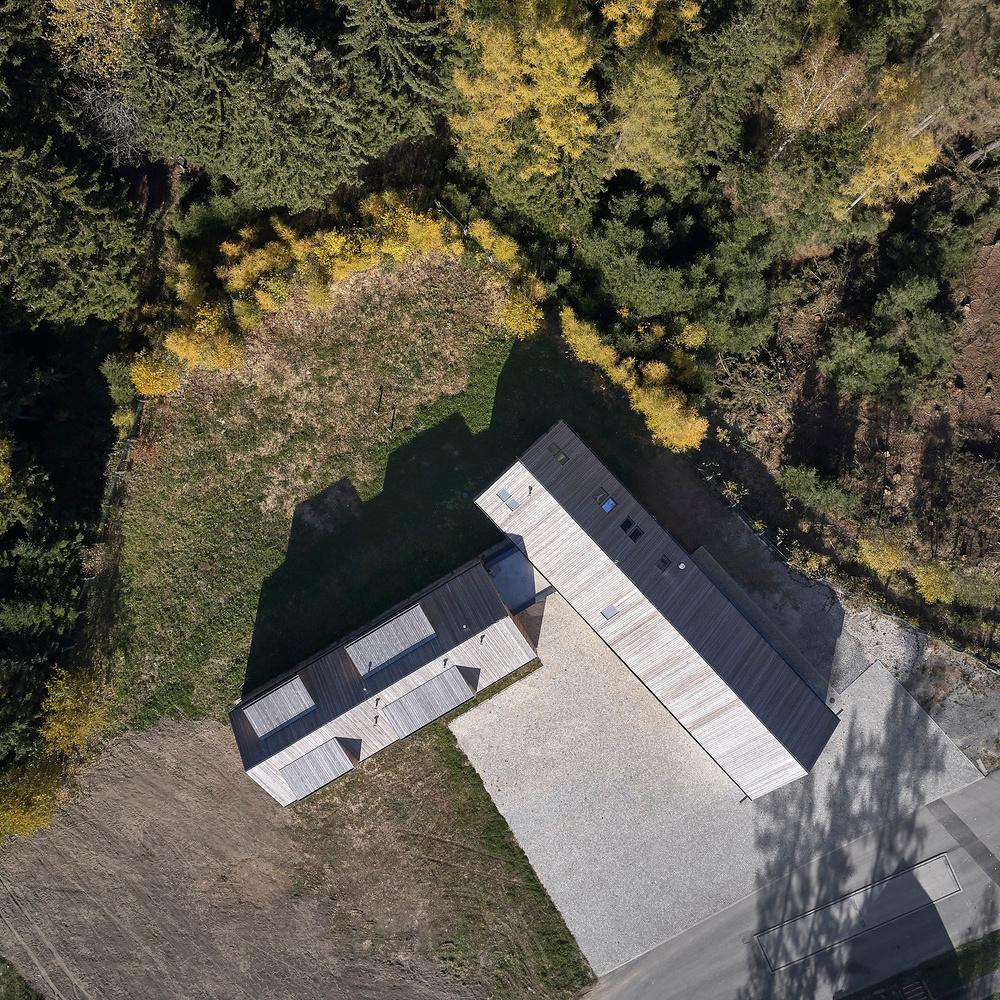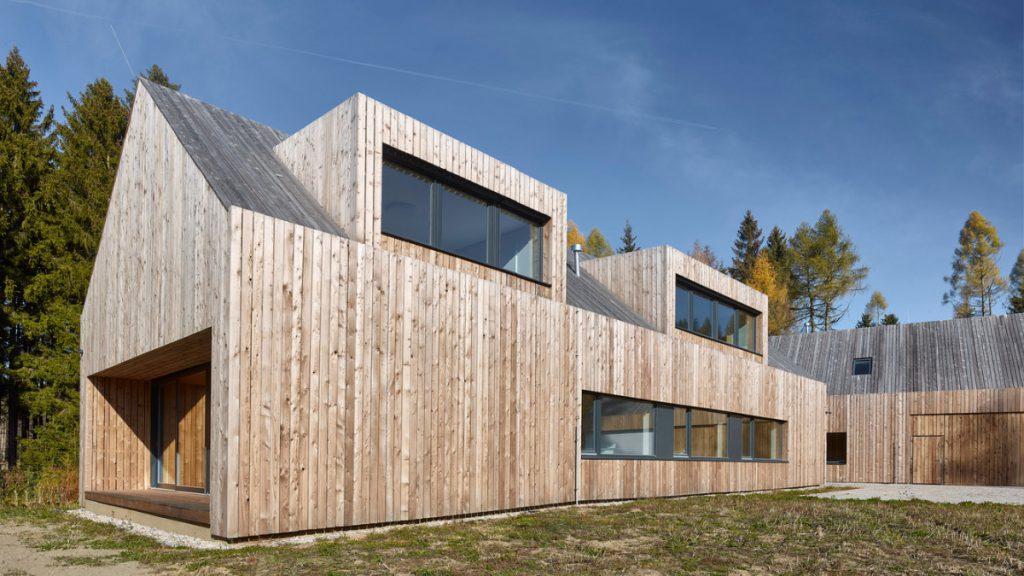In the depths of the forest
Dense, green forests are often synonymous with calm, nature and unspoiled landscapes – but they also need care and attention. Such forestry operations can inspire interesting architecture, as shown by the Forest Administration Lodge in Czechia.
Not least thanks to Peter Wohlleben’s bestseller “Das geheime Leben der Bäume” (The Secret Life of Trees), forest management has now shaken off its slightly traditionalist image. An author and nature conservationist, he explains all about ecological forestry.
Woodland setting
Czech company Pacovská lesní s.r.o. has set its sights on maintaining and improving the condition of urban forests. Its modern approach is reflected in the company’s new administration and wood processing site. Situated in the Šimpach region, southwest of the town of Pacov, a rather impressive building has been constructed at the heart of the forest, with offices and workshops.
The premises also include a composting plant with a comprehensive system for collecting and recycling timber waste. Admittedly, that doesn’t sound especially attractive. But this recent building, constructed on the edge of the forest, adds two further dimensions to the site: functionality and aesthetics.
Forest Administration Lodge – attractive and practical
The forest lodge has a classical, archetypal shape consisting of two basic orthogonal shapes. These are set in an open angle and connected via a lobby.
The main aim was the progressive and contemporary presentation of traditional morphology.
20-20 Architekti and Vyšehrad Atelier
The visually dominant section is principally for administration, while the second serves as a wood processing plant with social facilities for the forest workers. According to the designers responsible for the project – 20-20 Architekti and Vyšehrad Atelier – “the design reflects the tradition of architecture typology of forestry and farm buildings – in shape, material but also functionally.”
Forest cabin remodelled
Right from the outset, the project was based on a central theme: “The main aim was the progressive and contemporary presentation of traditional morphology.” Remodelling the design of a forest cabin, the traditional gabled roof was given an entirely abstract shape without roof overlaps.
In order to enhance this “rustic” character even further, the majority of the building was clad in timber on the outside. Larch planks have been used to make the building look as it is were “carved” out of timber. The roofs are also covered in larch wood, with roof dormers in simple cubic shapes and counter roofs “growing out” of the roofs. As a contrast, the connecting lobby is designed with glazed and sheeted surfaces.
Traditional element
Some of the facade on the technical part of the building is simply plastered, which is another traditional element of a country lodge. Large sliding doors allow easy entry and handling of forestry equipment.
Highly durable materials with elementary aesthetics and simple charm were chosen by the architects for the interior. For instance, unpainted prefabricated reinforced concrete elements such as ceiling panels and stairs are found here. Some internal installations are intentionally visible. And the external handling and parking areas are paved with granite cubes.
Simple and stylish
The glazed main entrance to the building serves as a central lobby and provides access to both sections. It is also designed to symbolize the connection between the administrative wing in the south and the technical part in the north.
The south wing contains the forest administration offices, where the director, secretary and game warden are based. Furthermore, a large meeting room with a glass wall and a shallow loggia, which is open to the forest, further complement these three units.
Enough space for offices and workshop
The northern building contains facilities for employees, with changing rooms, bathrooms and toilets, as well as a recreation room. It also houses the technical equipment for the entire site, plus equipment, service workshops and a warehouse. On the top floor of the north wing, there is space for accommodation and facilities for seasonal workers, which is accessed via a steel staircase.
Finally, here’s something for anybody who is interested in forestry and wants to know more: Peter Wohlleben’s podcast is full of information on how the climate and forests can be better protected, why biodiversity is so important, and what each and every one of us can do to help. Listen in and enjoy!
Text: Martin Obermayr
Translation: Rosemary Bridger-Lippe
Photos: Filip Šlapal
